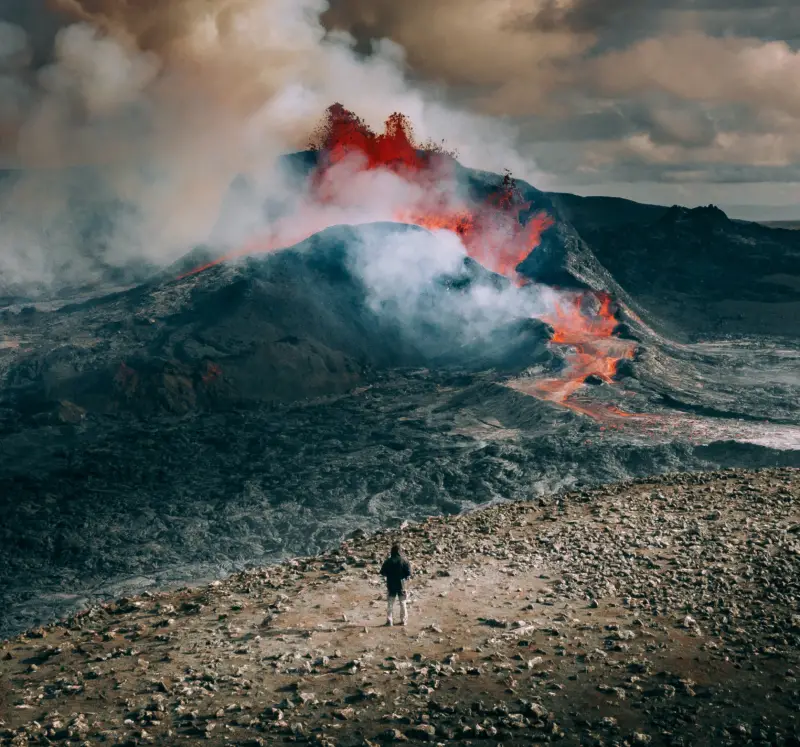Hiking on and around a volcano can be a great activity as volcanoes are indeed wonders of nature that are fascinating to experience first hand!
Even though the volcano is not erupting, the nature of a volcano presents several risks. This is why I have written this post.
I hope that you will read on and follow the advice listed and elaborated in this post:
- Investigate the type of volcano and its seismic activity before you go
- Prepare for toxic gasses emitted by the volcano
- Protect yourself against ashes emitted by the volcano
- Don’t drink or swim in water near the volcano
- Avoid walking near hot and recently solidified lava
- Prepare for bad and rapidly changing weather conditions
- Avoid mud floods or “Lahars” caused by the volcano
- Avoid walking near trapped gasses and lava (explosions)
- Be careful around wild animals on a volcano and don’t bring pets
- Be wary of sharp rock formations
Volcanoes are dangerous by nature and many dangers lurk in their vicinity – even long after an eruption has elapsed! In this post, I guide you through all the information you need to plan a safe hike on a volcano.
There is no doubt that volcanic eruptions are amongst the most violent, dangerous, and fascinating natural phenomenons in history. Not only can these events have catastrophic outcomes by altering nearby cities, land, and water.
But the small droplets, particles, and gases expelled by a volcano can also influence ecosystems globally.
Luckily, the precursory unrest of an awakening volcano can warn us in time to prepare us for these detrimental events so we can prepare ourselves to prevent major damage.
Because you basically climb a (hot!) mountain, it will take you much longer than walking the same distance e.g. in a flat forest trail.
Climbing a volcano is a fascinating and fun activity but there are a few things to keep in mind.
I personally just came back from an awesome hiking trip in Iceland. Here we were hiking to the crater of the Fagradalsfjall volcano in Geldingadalir near Keflavik.
Take a look at the video in this post to get an idea of the volcanic environment.
Contents
1. Investigate the type of volcano and its seismic activity before you go
Just like you check the weather forecast before going camping outdoors, you might want to check the type of volcano and its activity before you pay it a visit.
There are two types of volcanoes that pose different risks. Stratovolcanoes are the most common.
They have no active lava flow, which makes them dangerous because they build up pressure and can suddenly explode. For this type of volcano, an increase in seismic activity can indicate an imminent explosion.
Shield volcanoes are safer and more spectacular because their active lava flow prevents the build-up of pressure and explosions.
Hotspots for hiking around shield volcanoes are in Iceland and Hawaii. The two countries with the highest geothermal activity in the world.
To ensure your own safety during the hike, consult the local authority on seismic activity in the area before going. In the US, a map of recently reported seismic activity can be found on the USGS (United States Geological Survey) website.
Another fun way of visualizing this is by googling “recent seismic activity”. In Iceland, where I went, they also have a map of the recent seismic activity and along with updates on active volcanoes.
For Hawaii, the USGS has a comprehensive surveillance page showing all seismic activity along with updates on recent volcanic activity.
When hiking longer trails in the US, be sure to check if there is seismic activity on your route!
2. Avoid toxic gasses emitted by the volcano
If you are hiking on a volcano that suddenly erupts in an explosive manner, the hot molten lava is not what is most likely to kill you. When a volcano erupts violently, it sends out a mix of lava, gases and ashes.
Whereas the lava is hot and indeed dangerous to touch, the gases expelled by a volcano are likely to reach you faster and, along with the ash particles, slowly choke you to death.
However, most volcanoes suitable for hiking are not explosive, but effusive in their eruptions, slowly releasing lava and gases gasses from the crater.
The feature of slow gas release and build-up, is perhaps the most dangerous feature for people to be aware of when hiking volcanoes.
The gases released from a volcano are, apart from steam (water), mainly made up of sulfur and halogen compounds such as:
- SO2 (Sulfur oxide)
- H2S (Hydrogen sulfide)
- HCl (Hydrogen chloride or Hydrochloric acid)
- HF (Hydrogen fluoride)
These chemicals are all toxic to humans and cause irritation of the lungs and respiratory tract at even small concentrations if the exposure lasts long enough. Volcanic gases are especially problematic for people suffering from asthma and chronic bronchitis because they aggravate these conditions.
Especially hydrogen sulfide is problematic as it is highly toxic even in smaller concentration. It reacts with water in your eyes and respiratory tract to form sulfuric acid (H₂SO₄), which may cause permanent damage to these tissues.
and because the change in concentration is hard to discern by smell alone. Although it smells strongly (like rotten eggs) the human sense of smell is quickly paralyzed by hydrogen sulfide and thus does not detect further increases in smell intensity before it is too late!
Therefore it is important to be aware of presence of gasses at the volcano you are going to climb. For some volcanoes measurement equipment has been set up to constantly survey the concentration of gases and warn about high gas concentrations.
On the volcano currently erupting in Iceland, you can find information on gas concentration, wind dispersal and safety on the homepage of the Icelandic meteorological office.
3. Protect yourself against ashes emitted by the volcano
An active volcano may spur ashes from its erupting vents. Ashes are most often produced from the more explosive eruptions where high pressure release of particles is involved.
Volcanic ash consist mostly of microscopic stone fragments, often with a high content of silica, iron and other minerals. These particles may damage your eyes and lungs and should therefore be avoided.
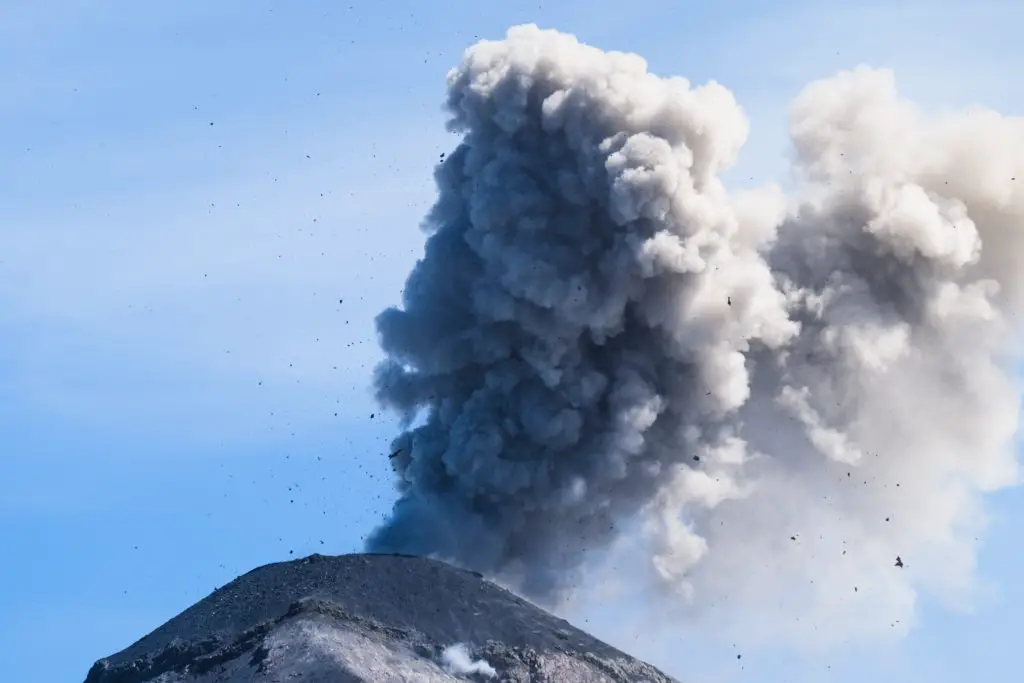
When ejected from large explosive volcanic eruptions, ash clouds can stay in the lower atmosphere for weeks where it may block air traffic due to the damaging effect on plane engines.
There is no good reason to walk onto an explosively erupting volcano, so my best advice is just to avoid them altogether.
However, there might be situations, where the ash appears suddenly when you have already started your hiking trip. In such cases, the rules of protection are the same as for the gases described above: Stay out of the wind direction of the ashes and wear a mask if possible.
The requirement for a mask that filters out ash particles are less than for a gas mask, so here a good quality dust mask maybe sufficient.
For emergency, even a piece of wet cloth may help. Although, because gases and ash is often released at the same time, only a professional gas mask can fully protect you!
4. Don’t drink or swim in water near the volcano
Drinking water in nature always poses a risk. Water on or near volcanoes is no exception. The conditions on a volcano are hotter and chemically different than most lakes on the uninterrupted surface, so the water poses different risks from what is normally the case.
As for all water sources, microbes may be present and ingestion of certain bacterial or protozoan species can make you sick. However, the bacteria found in a volcanic lake or water puddle may be very different than in other locations.
Due to the hotter temperature of the water, there might be a higher chance of finding human pathogens.
Especially if the temperature is close to the 99°F (37.2°C) of the human body. However, if the temperature is higher than this, the chance of finding human pathogens decreases dramatically.
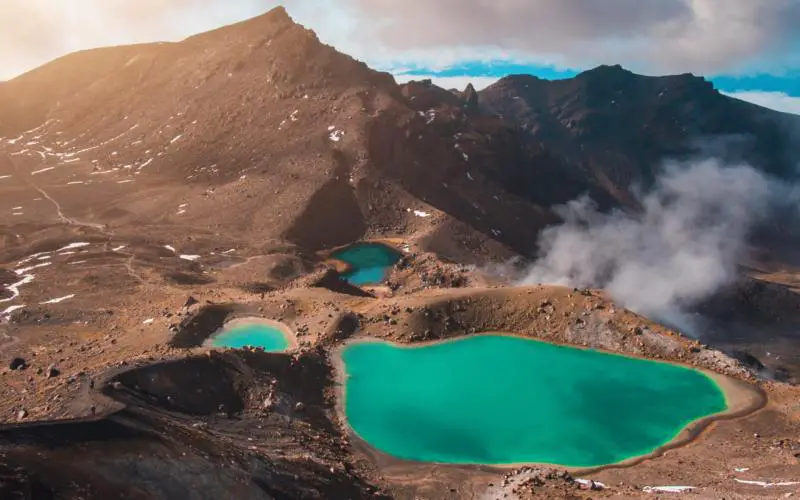
The main problem when considering the safety of volcanic water, is that it may contain chemical compounds that are toxic.
Because the water may come in contact with the minerals and gasses emitted by the volcano, there is a high chance the the water will contain sulphur, chloride and fluoride compounds.
These are generally toxic compounds and will turn acidic upon reacting with water. Therefore the water may not only be toxic to drink but also be corrosive to skin and could damage sensitive body parts such as the eyes.
Common water cleaning methods such as filters, UV light and purification tablets may not be able to deal with volcanic water.
5. Avoid walking near hot and recently solidified lava
Because volcanoes are literally gateways for hot magma to escape to the surface of the earth, caution needs to be taken when walking in the proximity or directly on top of a volcano.
Molten lava is hot! It is in fact 800° to 1,300° Celsius, which is more than 2,000° Fahrenheit. Lava cools rapidly upon release from the crater, however, it does so asymptotically meaning that it will lose heat at an increasingly slower rate as it cools down.
Therefore, the solidified lava can still be hot for months after the eruption!
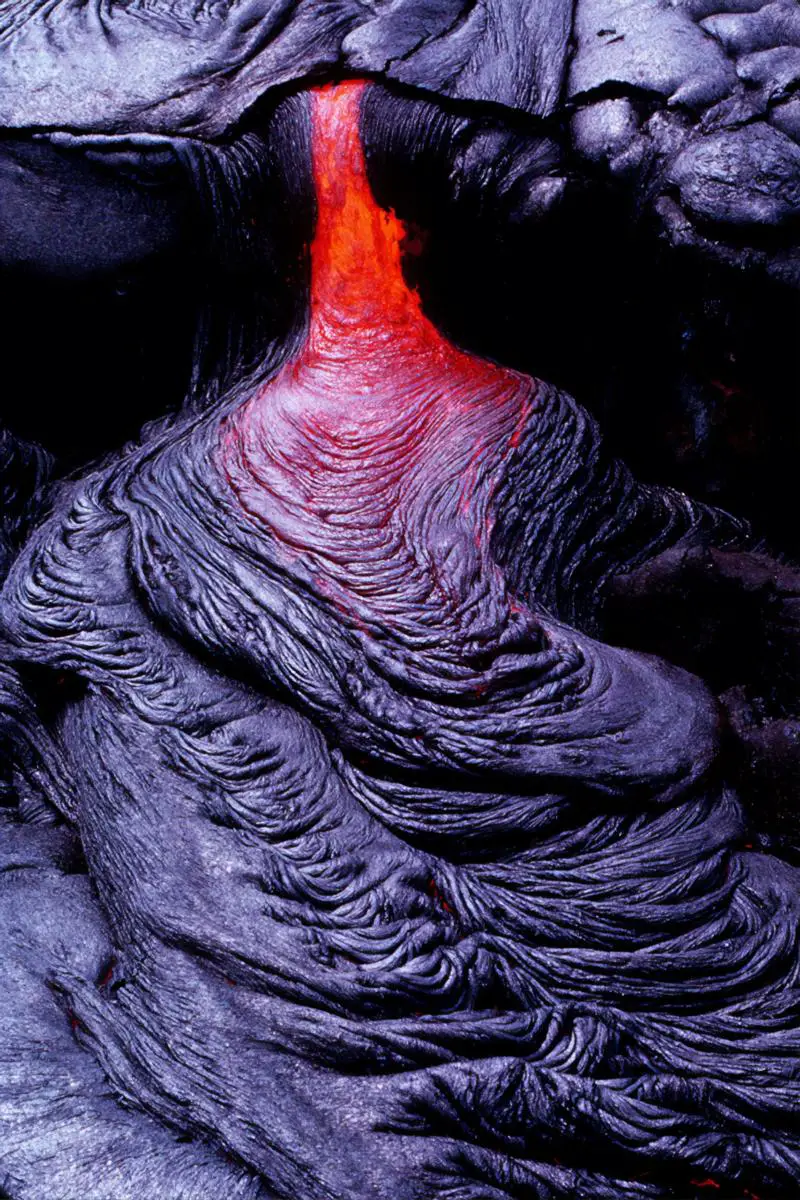
The lava can keep its heat because it rapidly forms a thin crust that insulate the lava underneath. The lava underneath this crust of solidified lava may therefore stay molten for longer, but it is hard to tell from simply looking at it.
This means that one has to be extra careful when walking on recently solidified lava rock, as you might breach the surface to significantly hotter lava underneath!
Luckily it takes only around 15-30 min for the outer crust to cool enough to withstand the weight of a human. However, it may still be hot enough to damage your shoes!
6. Prepare for bad and rapidly changing weather conditions
The weather in mountains can be quite varied and unpredictable. This is also true for most volcanoes rising high above sea level.
A sudden change in weather can make it hard to navigate or find other members of the group.
When I hiked the Fagradalsfjall volcano in Iceland, there was a thick layer of fog partly caused by the fumes expelled by the volcano.
This made it hard to find the path and orient towards the destination near the crater.
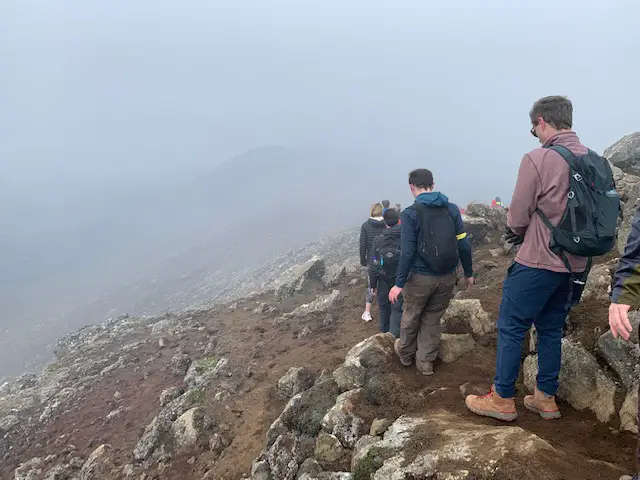
Therefore it is advisable always to bring a good warm jacket and a perhaps a waterproof shell jacket when going for longer hikes.
Lightning is also more likely to strike you when walking on top of a volcano, and volcanoes can even generate their own lighting – so called “Volcanic lightning”.
Volcanic lightning caused be the static electricity generated but the friction between dust particles in the air.
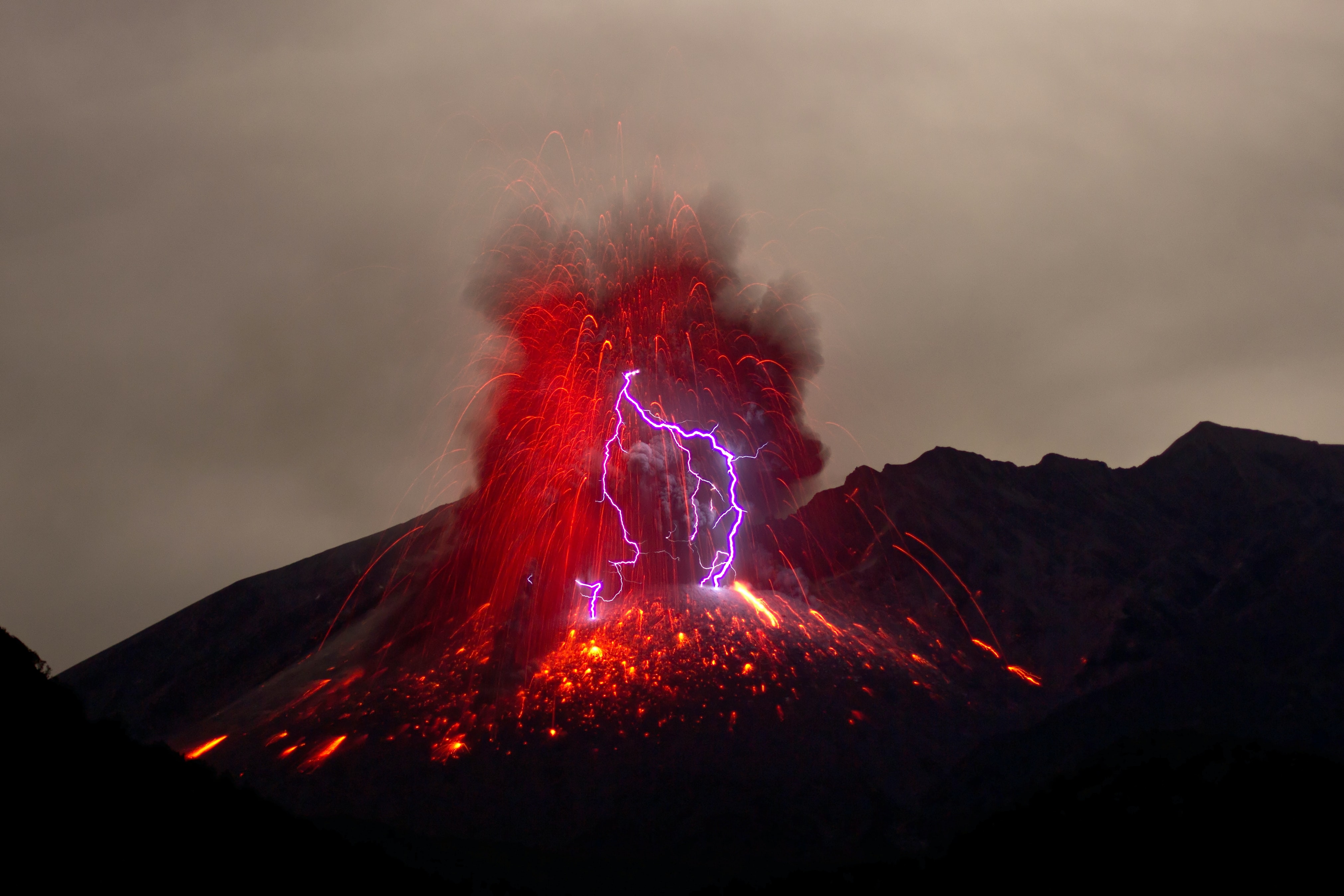
7. Avoid mud floods or “Lahars” caused by the volcano
If snow is present on the volcano, it will melt as the eruption proceeds to heat up the area. The resulting water streams will carry soil and smaller rocks with them to create so called “lahars” or mud floods.
These events are known to happen suddenly and fast, and hikers should therefore be extra careful when climbing a snow covered volcano.
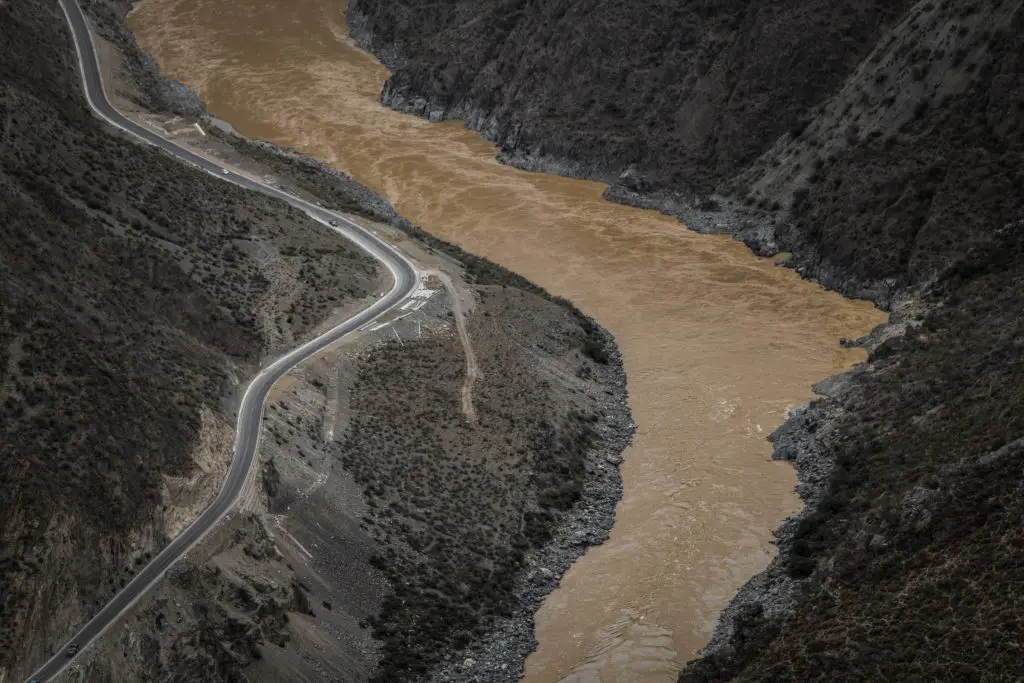
When doing so, it is a good idea to take a path not directly position underneath snow patches or perhaps avoid walking in the winter all together.
Walking on the snow may also be dangerous as it could be softer than expected or chambers of water or air could be formed not far from the surface that may increase the risk of falling through.
8. Avoid trapped gasses and lava (explosions)
Volcanoes are formed by trapped magma exiting through the surface of the ground, and while it might all come out at once, sometimes it will find more exits in the same area.
Such larger secondary eruption vents (or “parasitic cones”) are likely to occur near the original crater, but smaller secondary outlets may also occur from trapping of the liquid lava under the solidified crust of already solidified lava rock.
Such instance might give rise to explosions of gasses or water is present and forced to expand upon interaction with the hot lava from the nearby conduits.
9. Be careful around wild animals on a volcano and don’t bring pets
Wild animals as well as pets are not used to the activity of a volcano. Therefore, they might act differently than usual and often times they will be more unpredictable.
It is generally recommended not to bring pets onto volcanoes because pets, such as dogs and cats, are smaller than humans and therefore closer to the surface where the heavier toxic gases such as sulfur oxide and hydrogen sulfide are present.
Pets may also drink water contaminated with toxic compounds and quickly reach the safety limit due to their small size.
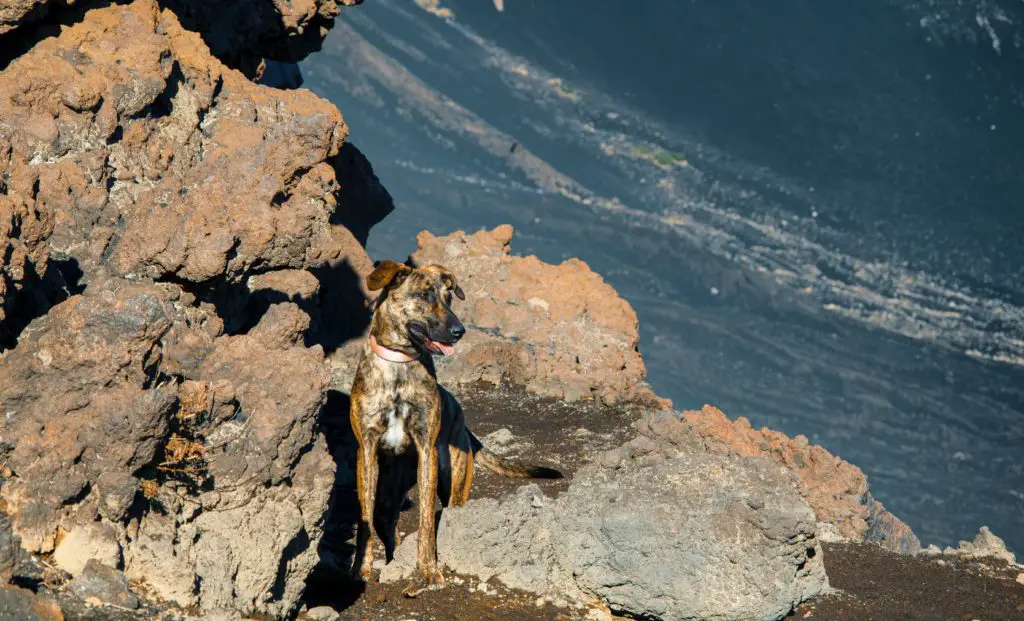
The kinds of wild animals found in a specific volcano of course depends on the place in the world where the volcano is located.
Volcanoes in exotic locations might, in time, give rise to a plentiful ecosystem due to the numerous fertilizing minerals expelled by a volcano.
Because the fertile lands around a volcano may encourage plants, such as coffee and grapes, to grow they will eventually attract more animals.
Wild animals like snakes seeking the heat near an active volcano or on the black rocks heated by the sun can lurk in the newly formed crevices of a volcano, posing a risk for hikers walking by.
Larger animals such as different types of monkeys, large cats, or bears that suddenly experience changes to their usual habitat, may be agitated and more prone to attack human visitors.

Other animals such as insects may also be present due to their ability to quickly move and adapt to newly formed landscapes. Mosquitoes are always annoying, and may be extra abundant if the rise in temperature caused by the volcano allows them to thrive better than the surrounding climate.
Interestingly, some animals have adapted so well to the volcanic environment that they are the first, and only ones, to occupy newly formed volcanoes.
The so-called “lava cricket”, Caconemobius fori, found in Hawaiian volcanoes, is the first animal to inhabit a newly formed volcano. Whereas such insects are not directly dangerous, they may be annoying in large numbers.
10. Be wary of sharp rock formations
While avoiding sharp objects concerns every aspect of being outdoors in the mountains, newly formed lava rock can be especially tough due to its roughness and sharp edges.
Because the forces of nature have not had the time to round off, and soften, the edges of the newly formed lava rock, there will be a higher proportion of tiny spikes and sharp edges in lava rock compared to older rock structures.
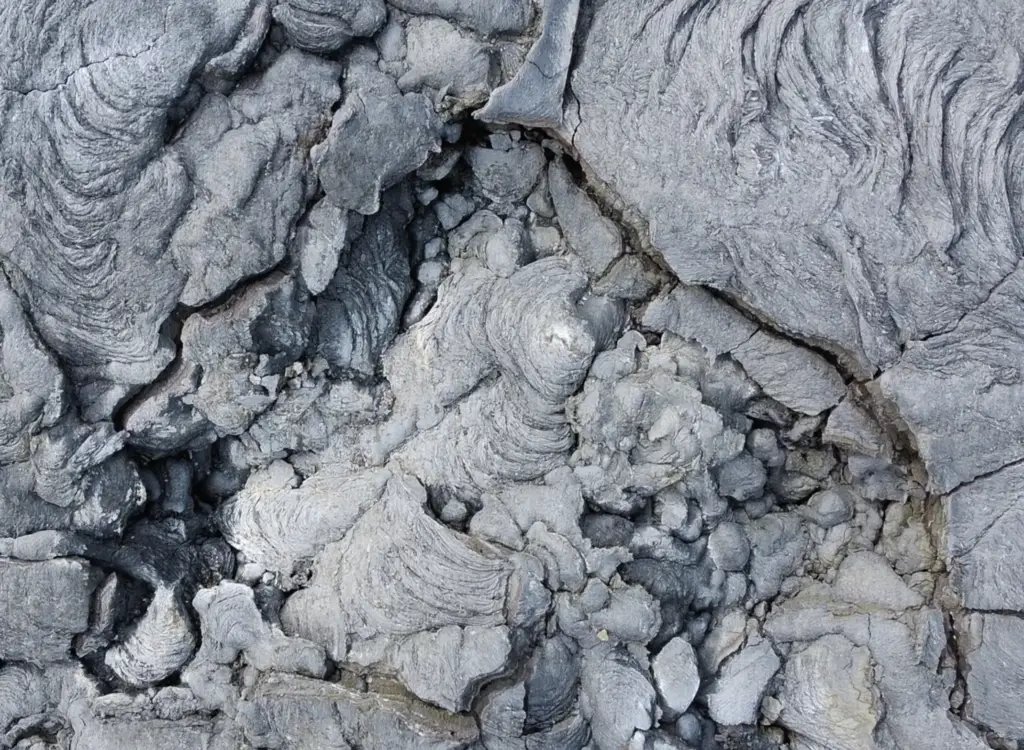
When walking on newly formed lava structures, spikes or rough edges of the rock can easily rip open your clothing or damage your shoes.
Be sure to wear rough clothing (I wore my very sturdy Fjällräven pants made from G-1000 fabric), and a proper pair of hiking boots, that can withstand momentary contact with sharp objects!
If you are into hiking and outdoor adventures, check out my 20 favorite lightweight backpacking tents for under 200$ and my top 10 recommended gear items for new hikers!
You will also want a good (filter?) drinking bottle and a proper hiking backpack (I prefer Fjällräven or Osprey!) but The North Face also makes good cheap hiking gear.
References
USGS on volcanoes: https://www.usgs.gov/volcano
The metrological office of Iceland: https://en.vedur.is/

